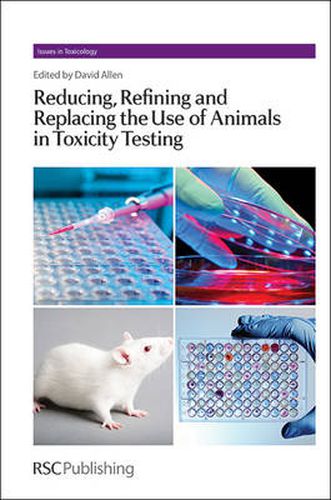Readings Newsletter
Become a Readings Member to make your shopping experience even easier.
Sign in or sign up for free!
You’re not far away from qualifying for FREE standard shipping within Australia
You’ve qualified for FREE standard shipping within Australia
The cart is loading…






Toxicity testing is used to assess the safety or hazards presented by substances such as industrial chemicals, consumer products, and pharmaceuticals. At present, many methods involve laboratory animals. Alternative procedures, some involving human cell-based technologies, are now being developed which reduce, refine, or replace animal usage and minimize the pain and distress caused. These new tests must protect public health and the environment at least as well as currently accepted methods.
This book describes the ever-expanding toolbox of methods available to assess toxicity. Such techniques often result from our growing understanding of the biochemical and cellular pathways that mediate toxicity mechanisms. This permits evaluations of information generated from several sources to generate a weight of evidence . By combining in silico, in vitro, and ex vivo methods with technologies that rely on biochemical- and cell-based in vitro assays, toxicologists are developing mechanistically based alternatives to live animal experimentation. This text also explores the complexities associated with adequate validation, and the assessment of test reliability and relevance. It provides an essential reference source for postgraduates, academics and industrialists working in this rapidly changing area.
$9.00 standard shipping within Australia
FREE standard shipping within Australia for orders over $100.00
Express & International shipping calculated at checkout
Toxicity testing is used to assess the safety or hazards presented by substances such as industrial chemicals, consumer products, and pharmaceuticals. At present, many methods involve laboratory animals. Alternative procedures, some involving human cell-based technologies, are now being developed which reduce, refine, or replace animal usage and minimize the pain and distress caused. These new tests must protect public health and the environment at least as well as currently accepted methods.
This book describes the ever-expanding toolbox of methods available to assess toxicity. Such techniques often result from our growing understanding of the biochemical and cellular pathways that mediate toxicity mechanisms. This permits evaluations of information generated from several sources to generate a weight of evidence . By combining in silico, in vitro, and ex vivo methods with technologies that rely on biochemical- and cell-based in vitro assays, toxicologists are developing mechanistically based alternatives to live animal experimentation. This text also explores the complexities associated with adequate validation, and the assessment of test reliability and relevance. It provides an essential reference source for postgraduates, academics and industrialists working in this rapidly changing area.